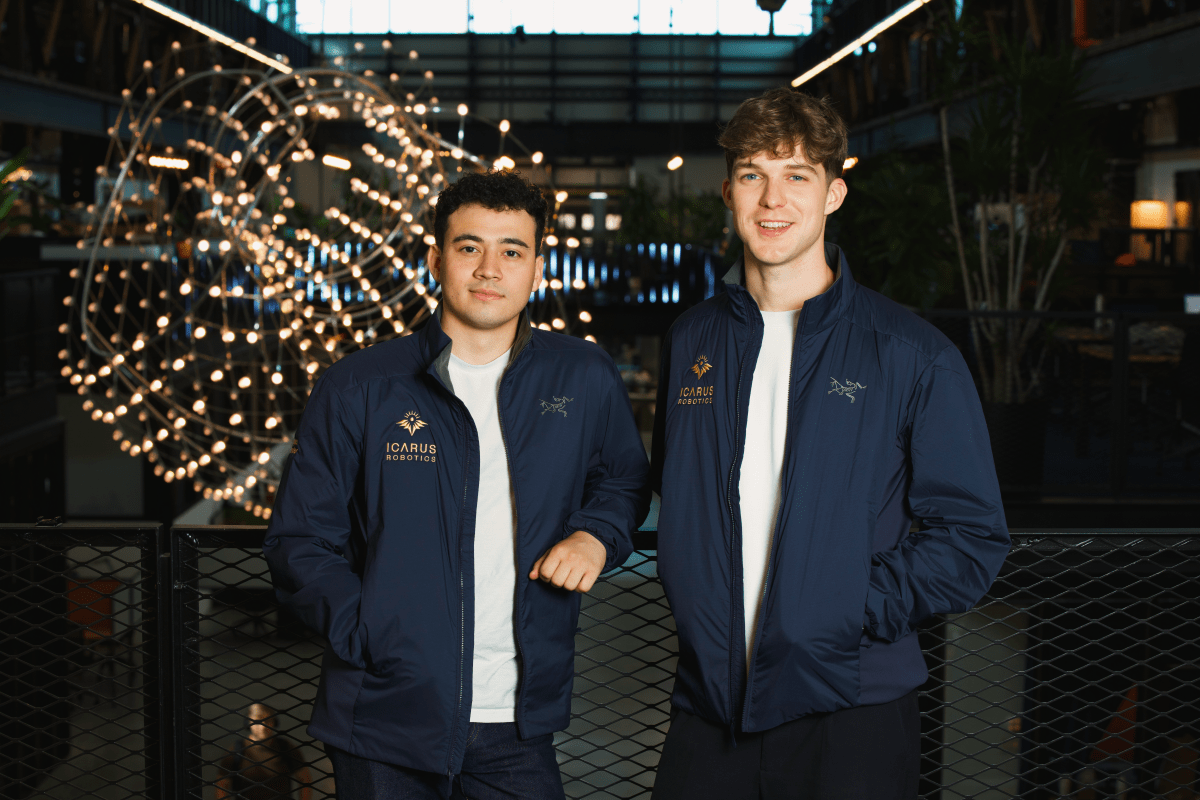Icarus Robotics Secures $6.1M Seed Funding to Deploy Intelligent Robots for ISS Cargo Logistics

Key Points
- Icarus Robotics raised $6.1 million in seed funding led by Soma Capital and Xtal.
- Founders Ethan Barajas and Jamie Palmer identified ISS cargo handling as a major inefficiency for astronauts.
- The company’s initial robot uses fan propulsion and dual jaw‑gripper arms to perform unpacking and stowing tasks.
- A terrestrial teleoperation demo successfully opened, emptied, and resealed an ISS cargo bag.
- Planned milestones include a parabolic‑flight test and a one‑year ISS demonstration via Voyager Space’s Bishop airlock.
- Future development will focus on embodied AI to enable partial and full autonomous operations.
- Icarus aims to augment, not replace, astronauts by handling routine logistics and freeing crew for research.
Icarus Robotics, founded by Ethan Barajas and Jamie Palmer, has raised $6.1 million in a seed round led by Soma Capital and Xtal, with participation from Nebular and Massive Tech Ventures. The startup aims to alleviate the time‑consuming cargo‑handling tasks that dominate astronaut work on the International Space Station. By field‑testing a fan‑propelled robot equipped with two jaw‑gripper arms, Icarus plans a series of demonstrations—including a parabolic‑flight campaign and a one‑year ISS trial via Voyager Space’s Bishop airlock—before advancing toward partial and full autonomy through embodied AI.
Problem and Vision
Co‑founders Ethan Barajas and Jamie Palmer spent extensive time interviewing astronauts and discovered that much of the crew’s workload on the International Space Station (ISS) revolves around cargo logistics rather than scientific research. Astronauts described their duties as “Amazon warehouse workers with PhDs,” noting that unpacking, repacking, and moving cargo can consume the majority of a two‑hour experiment cycle. Roughly every sixty days, the station receives about three‑and‑a‑half tons of supplies that must be unpacked and stowed, a process that can occupy astronauts for up to fourteen days. Barajas and Palmer concluded that a better solution was needed to free highly trained crew members for higher‑value tasks.
Technology and Funding
Icarus Robotics is developing an iterative robotic platform that starts with a relatively simple, fan‑propelled robot featuring two robot arms equipped with jaw grippers. The design focuses on the specific tasks of unpacking and stowing cargo bags, allowing the system to achieve around eighty percent of the dexterity required for ISS operations without the complexity of full anthropomorphic hands. The company recently demonstrated a terrestrial long‑distance teleoperation scenario in which the robot unzipped a real ISS cargo bag, removed its contents, and re‑zipped it, proving that sophisticated hand‑level dexterity is not necessary for many logistical functions.
The startup secured a $6.1 million seed round led by Soma Capital and Xtal, with additional investment from Nebular and Massive Tech Ventures. This capital will fund continued hardware development, flight‑testing campaigns, and the data collection needed to train embodied AI models that will eventually enable higher‑level autonomous commands such as “open the bag” or “unstow the items.”
Roadmap and Future Plans
In the near term, Icarus plans a parabolic‑flight campaign to validate robot performance in microgravity, followed by a one‑year demonstration aboard the ISS using Voyager Space’s commercial Bishop airlock. During this period, the robots will be teleoperated, with a skilled operator overseeing each task—a model the company argues is economically viable given the large labor arbitrage margin on the station.
Beyond the initial demonstration, Icarus aims to transition to partial autonomy, allowing human operators to select higher‑level primitives that the robot executes independently. The long‑term vision is full autonomy for deep‑space environments where teleoperation is impractical, complementing human activity rather than replacing it. Barajas emphasizes that the goal is to augment astronauts, maximizing the limited time they have on orbit for scientific research.